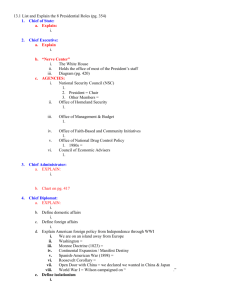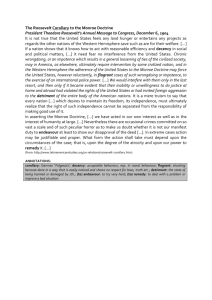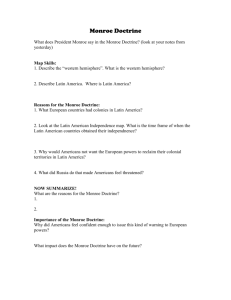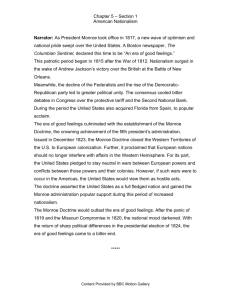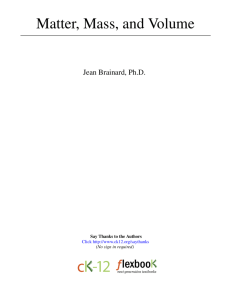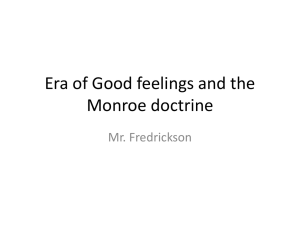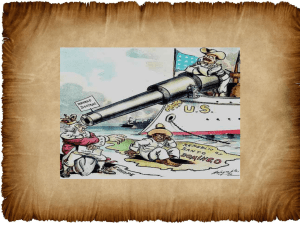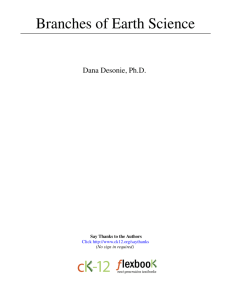1 Standard 8.45 Lesson, Primary Documents and Study Island
advertisement
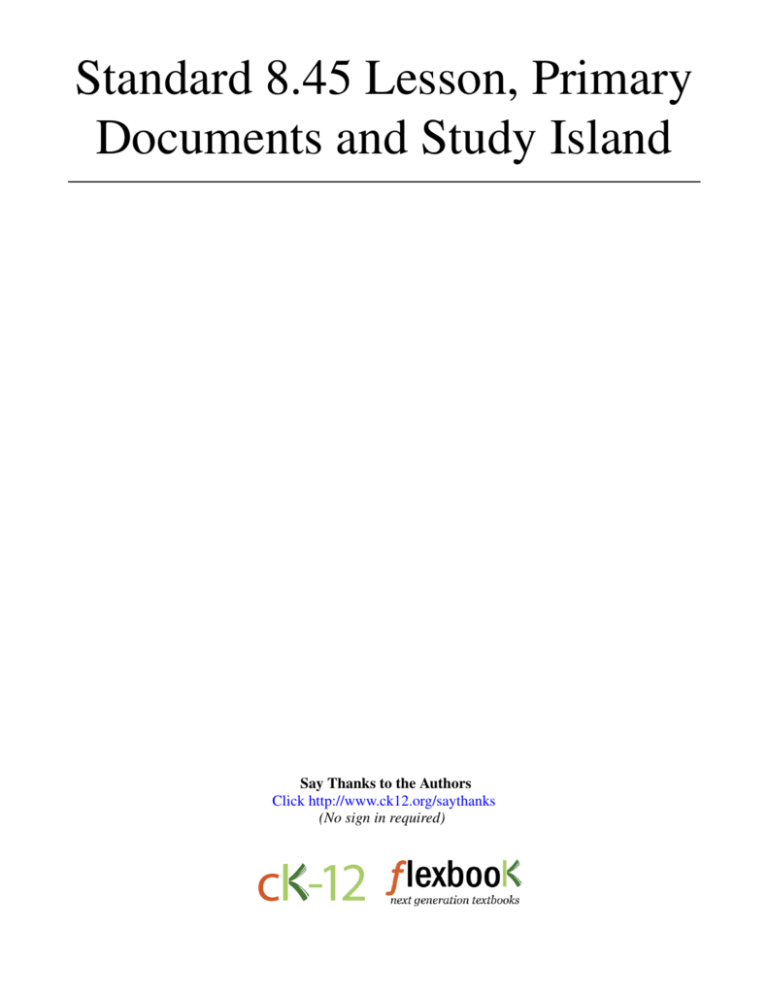
Standard 8.45 Lesson, Primary Documents and Study Island Say Thanks to the Authors Click http://www.ck12.org/saythanks (No sign in required) To access a customizable version of this book, as well as other interactive content, visit www.ck12.org CK-12 Foundation is a non-profit organization with a mission to reduce the cost of textbook materials for the K-12 market both in the U.S. and worldwide. Using an open-source, collaborative, and web-based compilation model, CK-12 pioneers and promotes the creation and distribution of high-quality, adaptive online textbooks that can be mixed, modified and printed (i.e., the FlexBook® textbooks). Copyright © 2015 CK-12 Foundation, www.ck12.org The names “CK-12” and “CK12” and associated logos and the terms “FlexBook®” and “FlexBook Platform®” (collectively “CK-12 Marks”) are trademarks and service marks of CK-12 Foundation and are protected by federal, state, and international laws. Any form of reproduction of this book in any format or medium, in whole or in sections must include the referral attribution link http://www.ck12.org/saythanks (placed in a visible location) in addition to the following terms. Except as otherwise noted, all CK-12 Content (including CK-12 Curriculum Material) is made available to Users in accordance with the Creative Commons Attribution-Non-Commercial 3.0 Unported (CC BY-NC 3.0) License (http://creativecommons.org/ licenses/by-nc/3.0/), as amended and updated by Creative Commons from time to time (the “CC License”), which is incorporated herein by this reference. Complete terms can be found at http://www.ck12.org/about/ terms-of-use. Printed: November 19, 2015 www.ck12.org C HAPTER Chapter 1. Standard 8.45 Lesson, Primary Documents and Study Island 1 Standard 8.45 Lesson, Primary Documents and Study Island 8.45 Analyze the relationship the United States had with Europe, including the influence of the Monroe Doctrine (E,G,P) ***EXTENDED RESPONSE LESSON ( Pictured Above: Cartoon of the Monroe Doctrine) The cartoon depicts Uncle Sam asserting dominance in the Western hemisphere while European nations looked on. The Monroe Doctrine - https://www.youtube.com/watch?v=miQFk1FMhfQ from Mr. Gray’s History Class The Monroe Doctrine was a U.S. policy introduced on December 2, 1823 that stated that further efforts by European nations to colonize land or interfere with states in North or South America would be viewed as acts of aggression requiring U.S. intervention. The doctrine noted that the United States would neither interfere with existing European colonies nor meddle in the internal concerns of European countries. The doctrine was issued at a time when nearly all Latin American colonies of Spain and Portugal had achieved independence from the Spanish Empire (except Bolivia, which became independent in 1825, and Cuba and Puerto Rico ). The United States, working in agreement with Britain, wanted to guarantee no European power would move on these newly independent countries. President James Monroe first stated the doctrine during his seventh annual State of the Union Address to Congress. It became a defining moment in the foreign policy of the United States and one of its longest-standing tenets. It would be invoked by many U.S. statesmen and several U.S. presidents, including Theodore Roosevelt, John F. Kennedy, Ronald Reagan, and others. The intent and impact of the Monroe Doctrine persisted with only minor variations for almost two centuries. Its primary objective was to free the newly independent colonies of Latin America from European intervention, ensuring that the New World would not become a battleground for the Old World. The doctrine put forward that the New World and the Old World were to remain distinctly separate spheres of influence for they were composed of entirely separate and independent nations. 1 www.ck12.org The Doctrine Lesson on the Monroe Doctrine — https://www.youtube.com/watch?v=hjtziqQ3rnM The full Monroe Doctrine is long and couched in diplomatic language, but its essence is expressed in two key passages; the first is part of its introductory statement: "The occasion has been judged proper for asserting, as a principle in which the rights and interests of the United States are involved, that the American continents, by the free and independent condition which they have assumed and maintain, are henceforth not to be considered as subjects for future colonization by any European powers." The second key passage, a fuller statement of the doctrine, is addressed to the "allied powers" of Europe (that is, the Holy Alliance); it clarifies that the United States remains neutral on existing European colonies in the Americas, but is opposed to "interpositions" that would create new colonies among the newly independent Spanish-American republics: "We owe it, therefore, to candor and to the amicable relations existing between the United States and those powers to declare that we should consider any attempt on their part to extend their system to any portion of this hemisphere as dangerous to our peace and safety. With the existing colonies or dependencies of any European power we have not interfered and shall not interfere. But with the governments who have declared their independence and maintained it, and whose independence we have, on great consideration and on just principles, acknowledged, we could not view any interposition for the purpose of oppressing them, or controlling in any other manner their destiny, by any European power in any other light than as the manifestation of an unfriendly disposition toward the United States." Source https://www.boundless.com/u-s-history/ 2 www.ck12.org Chapter 1. Standard 8.45 Lesson, Primary Documents and Study Island 6a. War of 1812 6b. Changing Boundaries and Diplomatic Relations Primary Documents and Supporting Texts to Read: excerpts from the Monroe Doctrine - http://www.ourdocuments.gov/doc.php?flash=true&doc=23 3
